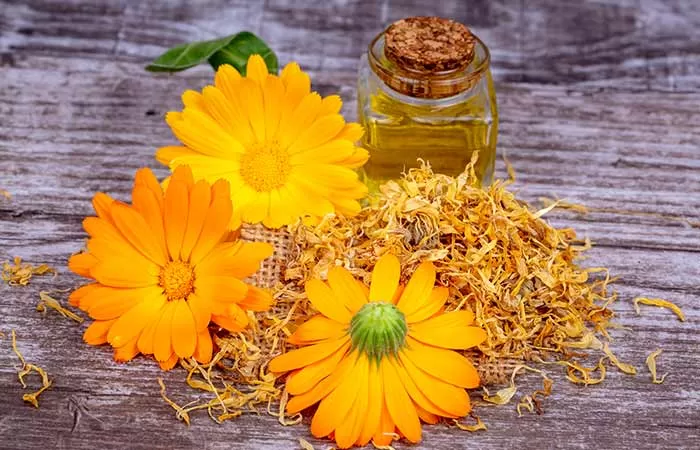- 0086-571-85302990
- sales@greenskybio.com
What is the medicinal use of marigolds?
2025-05-27
In the realm of natural remedies, few plants possess the versatility and wide-ranging therapeutic potential of the marigold. Known for its vibrant golden and orange-yellow petals, this resilient and easily recognizable flowering plant has long been a staple in gardens around the world. But beyond its ornamental beauty, marigold has a rich history of medicinal use. It has been utilized in traditional medicine for centuries and continues to attract the attention of modern researchers for its remarkable health benefits.
The marigold referred to in most medicinal contexts is Calendula officinalis, also called calendula or pot marigold, though other related species also have therapeutic attributes. In traditional practices such as Ayurveda, traditional Chinese medicine, and European herbalism, marigold is revered as a natural healer capable of addressing a wide array of health issues. Its medicinal properties largely arise from its bioactive compounds, including flavonoids, triterpenoids, carotenoids, essential oils, and antioxidants. These constituents form the basis of marigold’s anti-inflammatory, antimicrobial, antifungal, antioxidant, and wound-healing properties.
Historical Background and Traditional Uses
The use of marigold as medicine dates back to ancient civilizations. Egyptians valued the plant for its skin-healing qualities, while the Greeks and Romans employed it as a treatment for wounds and skin irritations. In medieval Europe, marigold was praised for its "miracle" effects in treating infections, fevers, and even venomous bites, earning it mythical regard as a healing flower.
Traditional preparations of marigold often involved using its petals to create teas, tinctures, infusions, or oils. These preparations were applied topically or ingested to address a range of issues, including skin infections, inflammation, digestive disorders, and menstrual irregularities. Folk medicine practitioners believed marigold could purify the blood, protect against infections during epidemics, and enhance wound healing. Its reputation has continued into the modern era, where it remains a cornerstone in alternative and herbal medicine practices.
Wound Healing and Skin Care
Perhaps the most recognized application of marigold in medicine is its role in wound healing and skin care. Marigold Extracts contain high levels of natural anti-inflammatory and antimicrobial compounds, which help to speed up the healing of cuts, bruises, burns, and other skin injuries. Research has shown that calendula oil and creams can promote tissue repair, reduce swelling, and prevent infections in wounds. These properties make it a popular ingredient in over-the-counter balms, ointments, and salves for minor cuts and burns.
In dermatology, marigold is widely used to treat skin conditions such as eczema, dermatitis, psoriasis, and acne. It soothes irritated skin, hydrates dry areas, and supports the skin’s natural barrier. Its antifungal properties are particularly useful for foot conditions like athlete’s foot and fungal infections. Marigold's gentle nature allows it to be used on sensitive skin, including for infants suffering from diaper rash.
Anti-Inflammatory and Pain-Relieving Effects
Marigold’s ability to combat inflammation extends beyond its external use. When consumed internally as a tea or extract, it has been traditionally used to address inflammatory conditions affecting the gastrointestinal tract, such as gastritis, stomach ulcers, and irritable bowel syndrome (IBS). Its soothing properties help reduce irritation and promote better digestive health.
Furthermore, marigold’s pain-relieving properties make it valuable in reducing discomfort in conditions like arthritis and muscle soreness. The plant’s triterpenoid compounds are believed to inhibit the body’s production of pro-inflammatory molecules, providing natural relief from pain and swelling.
Antimicrobial and Antiviral Properties
Marigold has demonstrated its effectiveness as a natural antimicrobial agent. Studies suggest that Marigold Extracts can inhibit the growth of various bacteria and fungi, including Escherichia coli, Staphylococcus aureus, and Candida albicans. This makes it useful in preventing infections and supporting the body’s immune system.
In recent years, interest has grown in marigold’s potential antiviral properties. Some research indicates that calendula-based compounds might help protect against certain viral infections, although more studies are needed to fully explore this potential. Whether battling internal infections or defending the skin from unwanted pathogens, marigold serves as a valuable ally in natural medicine.
Eye Health
The bright, golden hues of marigold flowers owe their color to carotenoids like lutein and zeaxanthin, which are also essential for eye health. These compounds act as antioxidants that protect the eyes from free radical damage and harmful blue light exposure. They are commonly associated with reducing the risk of age-related macular degeneration (AMD) and cataracts, making Marigold Extracts a valuable dietary supplement for maintaining vision.
Menstrual and Hormonal Health
For centuries, marigold has been used to support women’s health, particularly in managing menstrual discomfort. Its antispasmodic properties can ease muscle cramps and abdominal pain associated with menstruation. Additionally, it helps regulate menstrual cycles and reduce excessive bleeding due to its astringent effects. Women experiencing menopausal symptoms may also find relief from marigold-infused teas or supplements, as it promotes hormonal balance and reduces inflammation.
Potential Role in Cancer and Chronic Diseases
Emerging research suggests that marigold may have a role in preventing or managing chronic diseases, including cancer. Its antioxidant-rich composition helps neutralize harmful free radicals that contribute to oxidative stress and chronic inflammation—both of which are factors in the development of cancer and other conditions such as heart disease and diabetes. In laboratory studies, marigold extracts have shown promise in inhibiting the growth of certain cancer cells, though much more research is needed to confirm these effects in humans.
Modern Applications and Sustainability
In modern herbal medicine and cosmetic industries, marigold continues to be a cherished ingredient due to its efficacy, safety, and versatility. It can be found in everything from skincare products and dietary supplements to herbal teas and natural first-aid kits. Moreover, marigold’s widespread availability ensures its sustainability as a resource for natural healing, as it can be cultivated with minimal environmental impact.
Conclusion
The medicinal use of marigolds is both a time-honored tradition and a field of ongoing scientific investigation. From their wound-healing powers to their roles as anti-inflammatory, antimicrobial, and antioxidant agents, marigolds provide a wealth of health benefits that are supported by historical evidence and a growing body of modern research. As an accessible and natural remedy, marigold remains a testament to the healing gifts of nature. Whether applied topically or consumed internally, this humble yet powerful flower continues to brighten lives—not just with its vibrant colors, but also with its profound medicinal virtues.
-
Why Are Marigolds Special?
2025-05-27
-
Is Marigold Good for Eczema?
2025-05-27
-
Can we apply marigold on face?
2025-05-27
-
What are marigolds used for?
2025-05-27














